Abstract
STUDY OBJECTIVE--To examine the statistical issues involved in the analysis of disease risk near point sources of environmental pollution, where data are held at both the individual and group (areal) level. To explore these issues with reference to possible socioeconomic confounding. DESIGN--Statistical review. SETTING--Point sources of environmental pollution. MAIN RESULTS--Except in very specific circumstances unlikely to hold in practice, aggregation of data to the areal level will lead to bias in the estimation of disease risk. CONCLUSIONS--There is no easy solution to the analysis of spatial data when some covariates (for example, age and sex of cases) are known at individual level, whereas others (for example, populations, age-sex distributions, small area deprivation indices) are known only at the areal (ecological) level. The underlying assumptions inherent in the analysis of these data need to be explicitly recognised in order to understand better the limitations of the available methodology as well as to inform interpretation of results. Ideally, the data should be kept as disaggregated as possible, to maximise the information available and minimise potential for bias.
Full text
PDF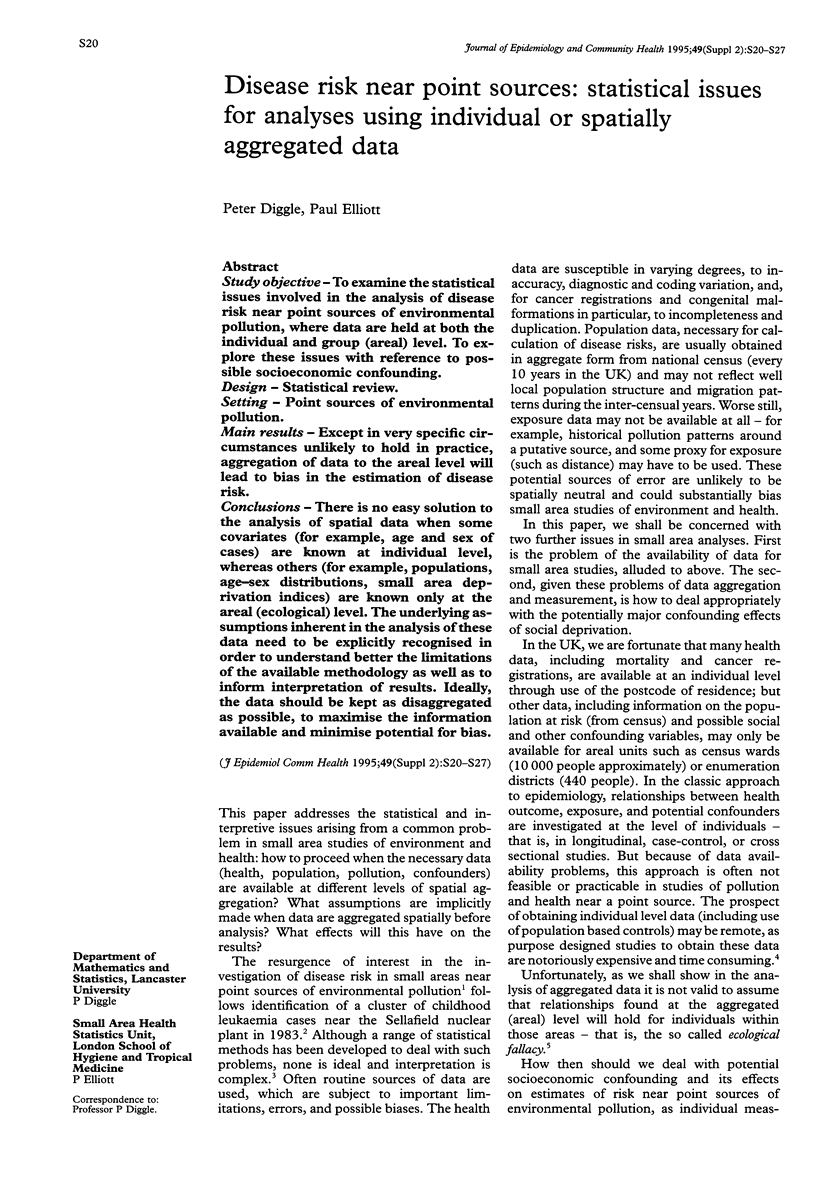
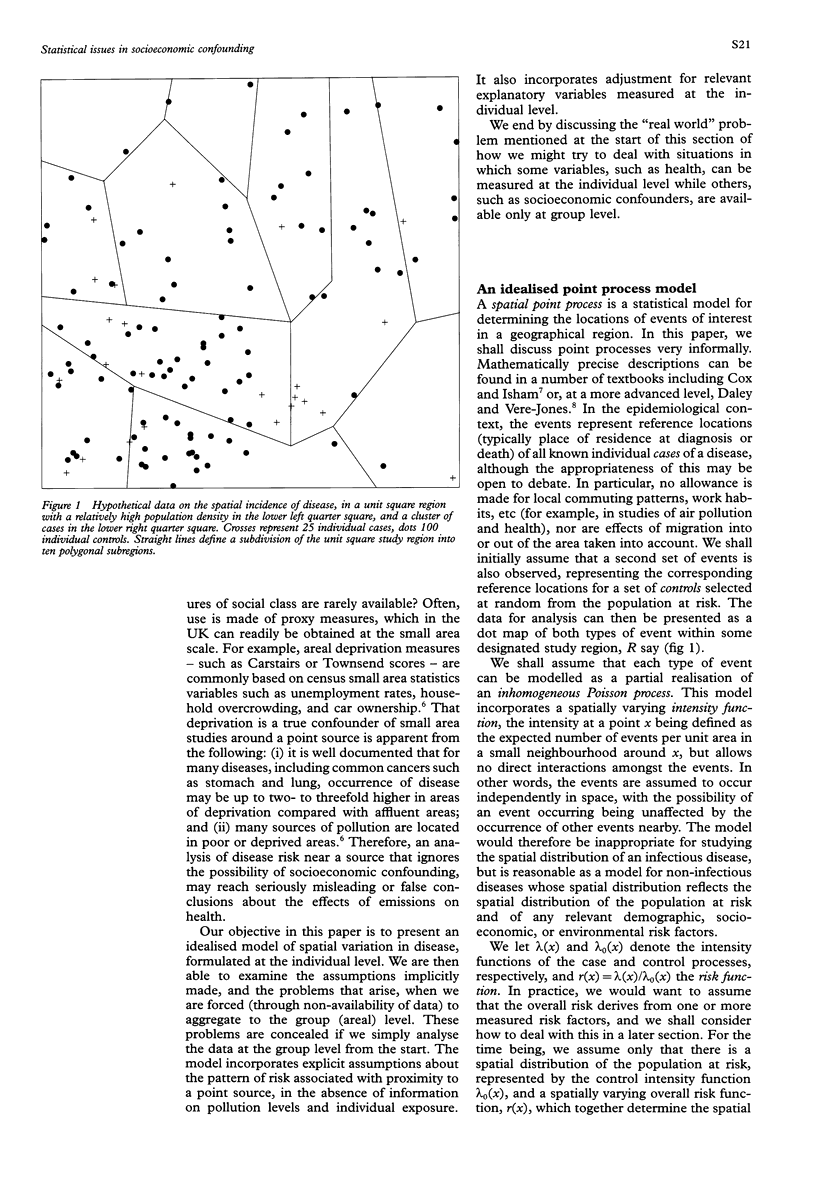
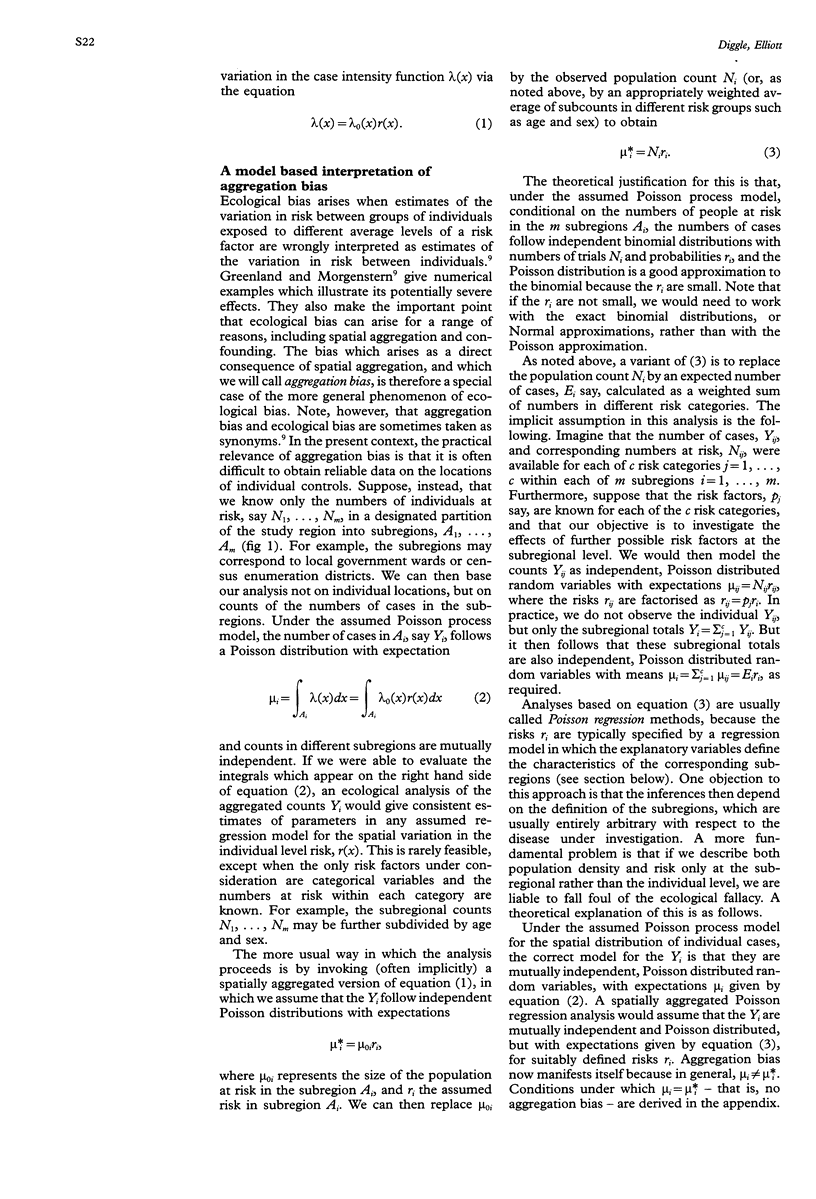

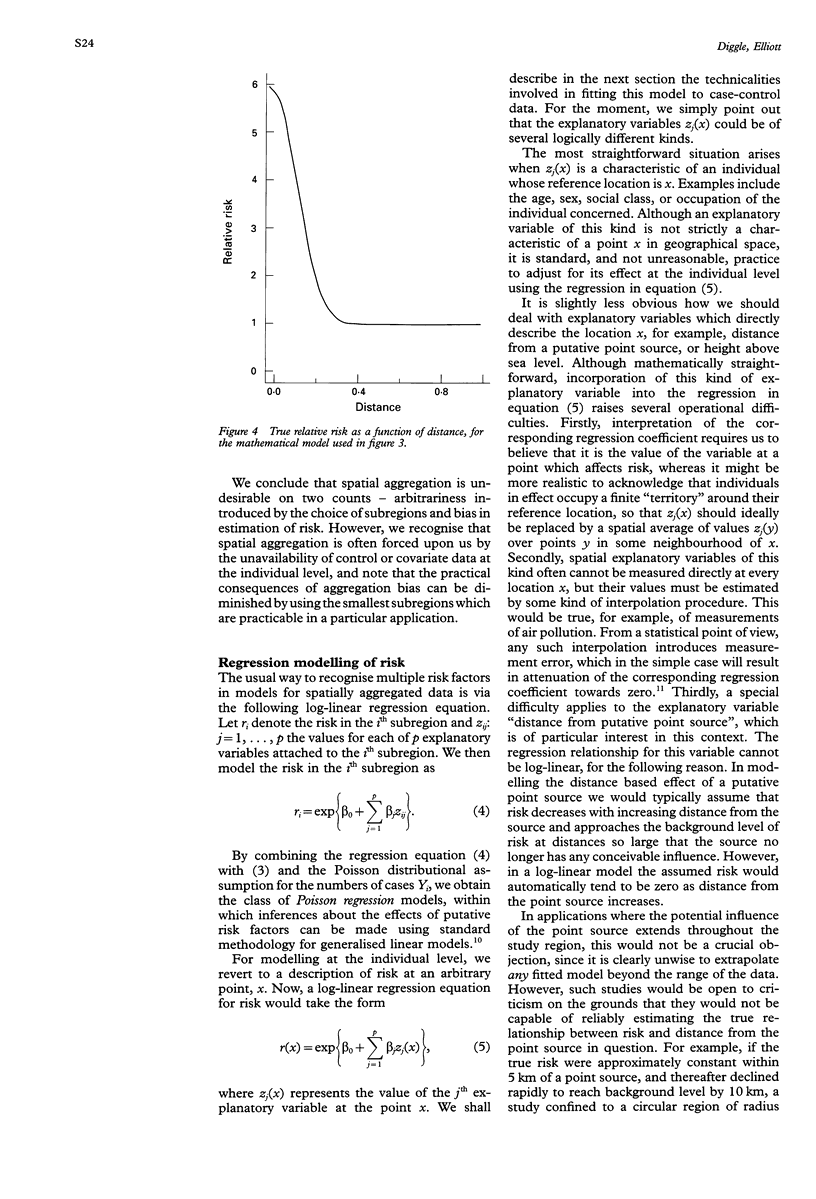
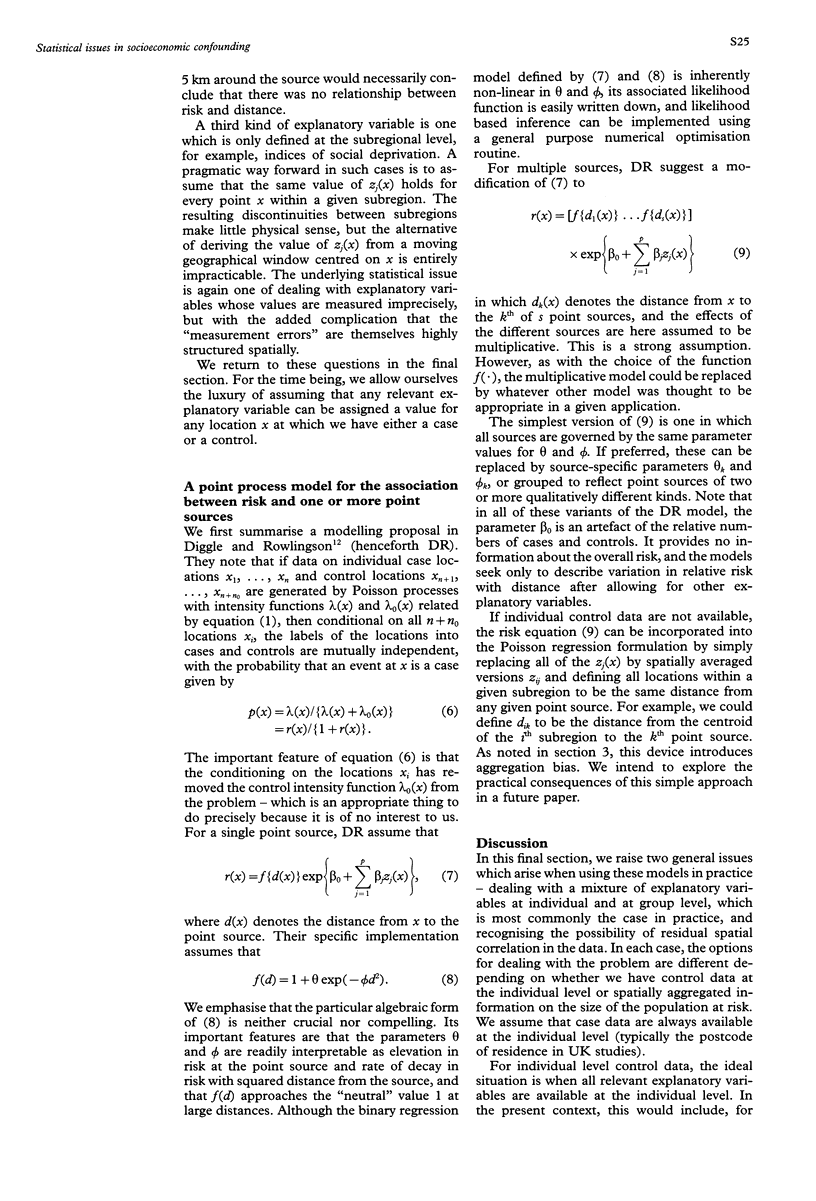
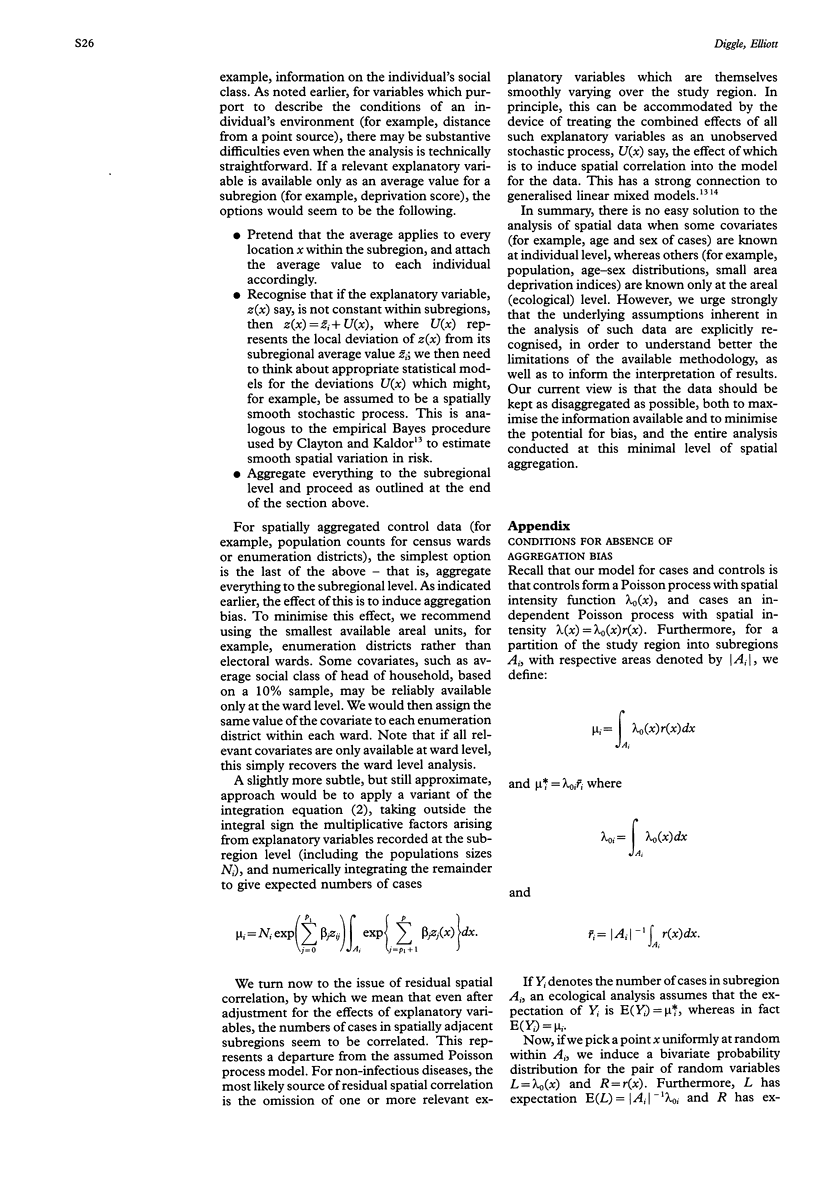
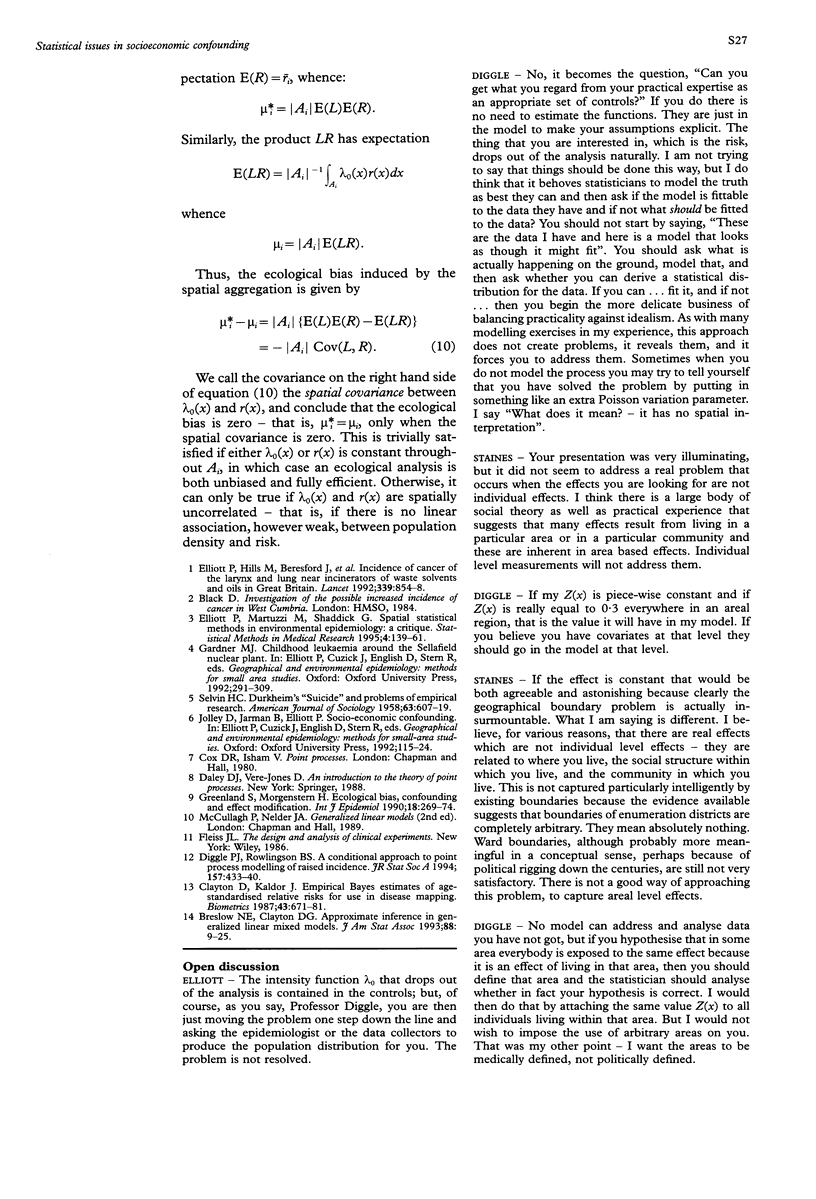
Selected References
These references are in PubMed. This may not be the complete list of references from this article.
- Clayton D., Kaldor J. Empirical Bayes estimates of age-standardized relative risks for use in disease mapping. Biometrics. 1987 Sep;43(3):671–681. [PubMed] [Google Scholar]
- Elliott P., Hills M., Beresford J., Kleinschmidt I., Jolley D., Pattenden S., Rodrigues L., Westlake A., Rose G. Incidence of cancers of the larynx and lung near incinerators of waste solvents and oils in Great Britain. Lancet. 1992 Apr 4;339(8797):854–858. doi: 10.1016/0140-6736(92)90290-j. [DOI] [PubMed] [Google Scholar]
- Greenland S., Morgenstern H. Ecological bias, confounding, and effect modification. Int J Epidemiol. 1989 Mar;18(1):269–274. doi: 10.1093/ije/18.1.269. [DOI] [PubMed] [Google Scholar]


